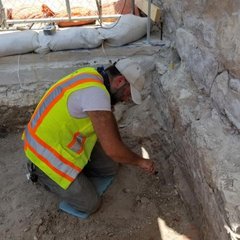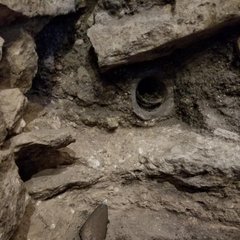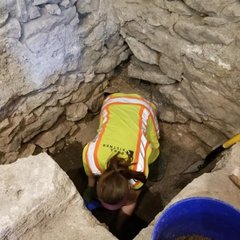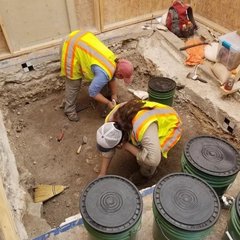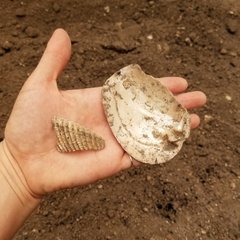Excavations within and around the Long Barrack continue to encounter exciting finds. Excavations in the southernmost unit of the Long Barrack appears to have encountered the base of the west and south wall foundations at approximately 130–140 cm (4.2–4.6 ft) below datum, or approximately 100–110 cm (3.2–3.6 ft) below the flagging stone. In the final levels of excavations, the artifact counts decreased. The materials encountered in these final levels possibly represent the early colonial and protohistoric periods.
The artifacts encountered in the last level of excavations consisted of lithics, Native American-made pottery, and more. No more archaeological excavations are planned to occur in this unit. The Historic Architects will perform their investigations in the coming weeks.

